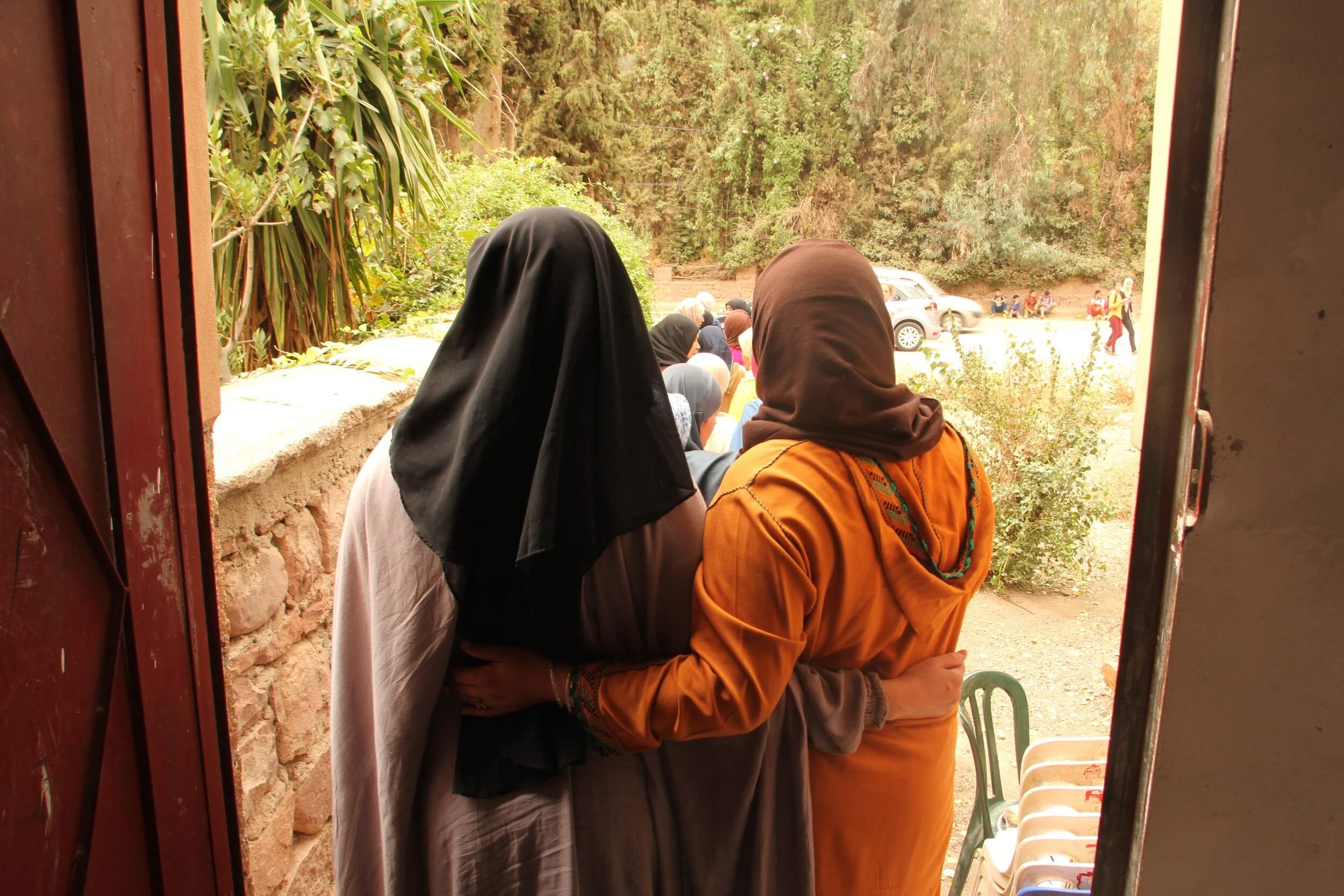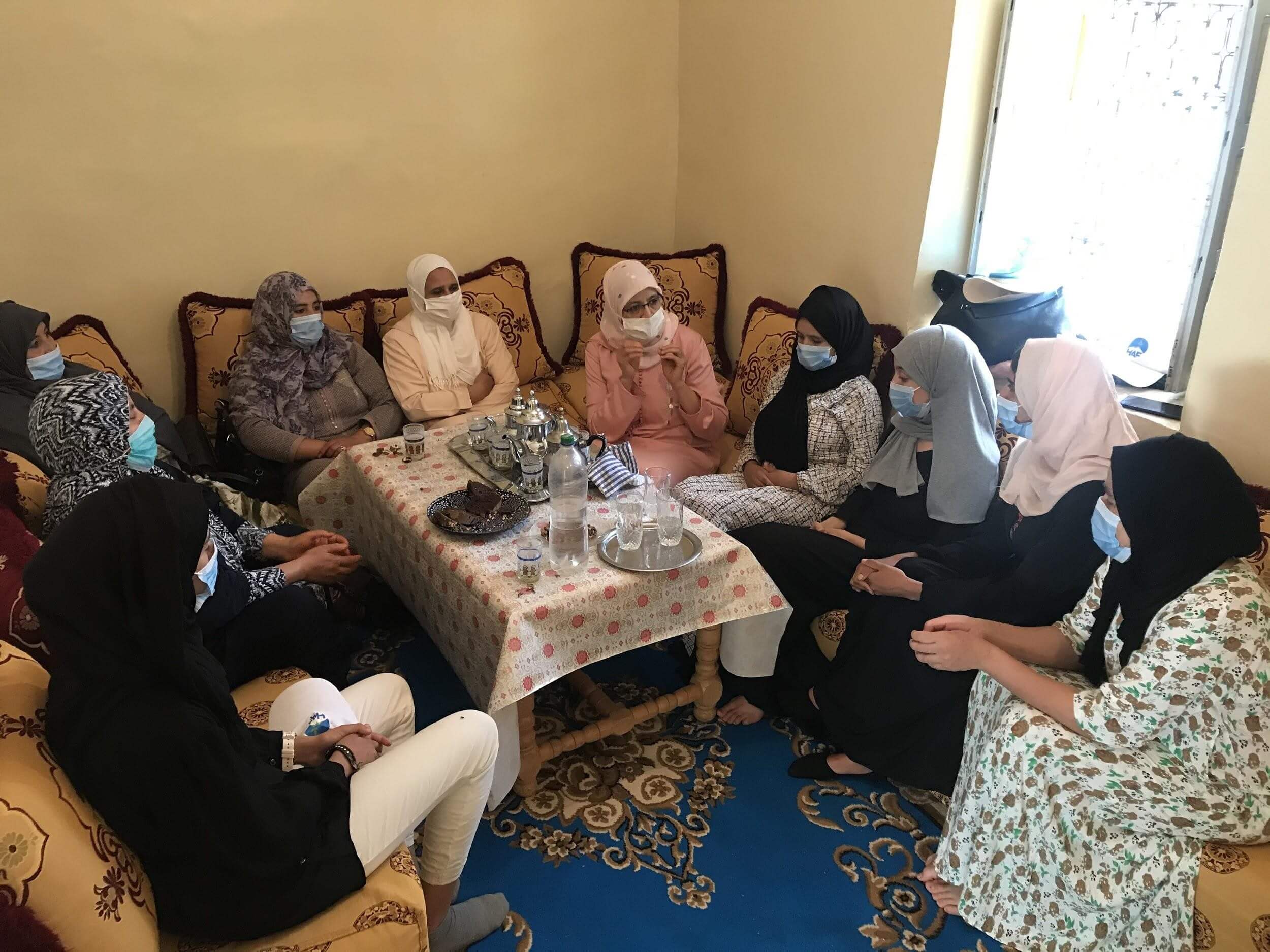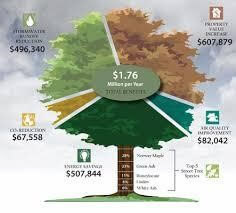One of the High Atlas Foundation’s (HAF) USAID Farmer-to-Farmer (F2F) team members, Fatima Zahra Laaribi, was selected from a competitive pool of applicants to attend the “2020 i-Tree International Academy” —a three- month online training organized by the US Forest Service International Programs, Northern Research Station, and the Davey Tree Expert Institute. This international program was designed to introduce the i-Tree suite of tools to global participants.
The first session of the Academy launched in October, with 80 participants from 26 countries joining in on the discussion across 4 continents. The session, delivered by experienced members of the i-Tree project team and other guests, proved very useful, as it focused on helping participants learn i-Tree applications. These tools can be used to assess the value of urban forests and green spaces.
Dr. David Bloniarz, an urban forester with an extensive background in urban forest management and landscape design, opened the session. Dr. Bloniarz holds a Master’s degree in Landscape Architecture and a Doctorate in Urban Forestry from the University of Massachusetts at Amherst. Currently, Dr. Bloniarzis a scientist with the Urban Natural Resources Institute, an initiative of the USDA Forest Service Northern Research Station. The Institute’s primary focus is the development of new tools and technologies for use by planners, managers, and researchers.
Dr. Bloniarz’s work involves research and technology transfer initiatives related to urban natural resource structure, function, and value. He serves on the i-Tree development team, providing technical and programming support for this inventory and analysis initiative. He also serves as an Adjunct Assistant Professor in the School of Earth and Sustainability at the University of Massachusetts at Amherst, extending his welcome to all the participants.
Before starting the session, Dr. Bloniarz shared their archiving system, the logistic components, and communication protocols. Then he introduced other experts on the panel including:
Kent Elliott: US Forest Service International Programs Assistant Director of Asia Pacific Region.
Liza Paqueo: Urban Outreach and Partnerships Specialist with the US Forest Service International Programs. Over the past few years, she has co-coordinated the International Seminar on Urban Forestry and Community Engagement and also manages Beyond Trees, an online platform dedicated to urban issues.
Allison Saracina: Service International Programs Washington, DC
Krista Heinlen: Heinlen has worked as a GIS analyst in Philadelphia for over 10 years, and comes to the Davey Institute and the USFS Philadelphia Field Station having conducted both broad and intricate spatial analyses in the fields of environmental science, social science, and public health. Her work includes GIS and mapping support for research at the field station, as well as helping i-Tree tool users better understand and incorporate their urban forest inventories and canopy analyses.
Al Zelaya: Research Urban Forester for The Davey Tree Expert Company. His primary responsibilities include development, research, training, website administration and providing technical support for urban forestry environmental service projects.
Jason Henning: Research Urban Forester with the USDA Forest Service and The Davey Tree Expert Company. He has a Ph.D. in Forestry and an M.S. in Statistics from Virginia Tech. Jason has 15 years of experience in teaching and research involving the quantitative assessment and modeling of forest resources.
The i-Tree International Academy
The program’s purpose is to develop a global network of individuals who can use i-Tree to complete assessment projects, advise others, and advance new i-Tree integrations.
The goals were as follows:
- Learn how to use several core i-Tree assessment tools including Eco and Canopy.
- Understand fundamental concepts behind the i-Tree tools including ecosystem services and their relationship to tree and forest structure.
- Explore how i-Tree Database can be used to integrate new global cities in i-Tree.
- Know the advantages and limitations of i-Tree when used internationally.
- Apply new learning to develop an ‘action plan’ for using i-Tree or advancing integration in their home county.
Over the course of two hours, panelists presented the i-Tree International Academy program along with the instructors, resources, experts, and i-Tree software toolkit. They introduced online resources and systems used during the course. In addition, they discussed the international issues and challenges global cities are facing.
Session one focused more on demonstrations, learned the framework of the academy, plan overview, I- tree concepts, keys website, and online resources.
What is an i-Tree?
It is a great tool to be used for data gathering for trees. According to the organization, i-Tree is
The i-Tree team’s journey started in 2006, putting USFS urban forest science into the hands of users. They started their initiative in Vietnam, Bangladesh, and India.
The i-Tree application is a free public domain software package developed by USDA Forest Service and partners, which really takes collections of many different tools and puts them under one umbrella. Though the i-Tree umbrella is based on peer-reviewed research that goes back to the 90s,it has been available to the public since 2006. With each year, the model continues to be improved.Today i-Tree includes a variety of tools that are used globally and encompass trees on all urban and rural lands.
During the session, participants learned that there are many tools such as landscape, county, design, My Tree, planting calculator, hydro, species, and projects. However, the focus in track 2 was on database, Eco, and Canopy, as these three tools are primarily used internationally.
i-Tree Tools
i-Tree tools allow users to look at that data and assess the values that are being provided, the ecosystem services, carbon sequestration, pollution, capture redaction, and energy redaction.
i-Tree Hydro
Hydro simulates the effects on hourly streamflow and water quality due to changes in tree cover and impervious cover within a watershed. It contains auto-calibration routines to help match model estimates with measured hourly streamflow. Hydro can be used internationally but they have found that it is often very challenging to obtain the necessary input data outside the US. There are hydrology related summaries available in i-Tree Eco that may address some of the climate and sustainability issues
i-Tree Canopy
Canopy allows users to easily photo-interpret Google aerial images to produce statistically reliable estimates of tree and other cover types along with calculations of the uncertainty of their estimates. This tool provides a quick and inexpensive means for cities and forest managers to accurately estimate their tree and other cover types. Canopy can be used anywhere in the world where high-resolution, cloud-free Google images exist (most areas). Use of historical imagery can also be used to aid in change analyses. i-Tree Canopy on the other hand requires users to help assess the amount of canopy cover which is used to estimate benefits.
i-Tree Eco
This is a data collection system designed to work with newer web-enabled mobile devices.i-Tree Eco requires that users input measurements on individual trees such as stem diameter and tree species. i-Tree Eco has a mobile data collection tool built-in. i-Tree Eco produces outputs related to tree health in terms of either tree condition or tree dieback. The pest component of Eco is currently limited to USA issues but outside the US i-Tree Eco is the best tool to determine carbon sequestration and carbon storage of trees.
Both i-Tree Eco and i-Tree Canopy will both estimate annual sequestration and the total carbon stored in your trees.
How Does i-Tree Work?
i-Tree’s basic premise starts with assessing structure, which is the physical characteristics of the tree and forest resource based on direct measurements or statistical estimates. Structural data is used with local environmental data including hourly weather and pollutant data to estimate functions (e.g. gas exchanges). Functions are converted into services, such as pollution removal, and then monetized
Caption:

Figure1: Diagram showing Basic i-Tree process
Caption: The easy-to-follow steps of the i-Tree process.
Trees provide numerous benefits to society. Trees cool air temperatures, reducing energy use in buildings and atmospheric carbon dioxide (CO2). They also improve air and water quality, mitigate rainfall runoff and flooding, enhance human health and social well-being, and lower noise impacts. Trees not only benefit the environment, but they also benefit the livelihoods of Moroccan communities. TheHigh Atlas Foundation (HAF) manages 12 organic fruit tree nurseries in 8 provinces of Morocco, with the capacity of 2.44 million seeds. HAF has a rigorous monitoring system. The monitor in each region helps to ensure the continued health of trees and to evaluate our implementation strategies, allowing us to achieve enhanced tree survival rates and sustainability.
HAF currently uses an application called Akvo Flow and i-Tree tools are very important for NGOs such as the High Atlas Foundation not only to monitor and improve its tree program effectiveness but also to increase funding opportunities.
At the end of the session, the presenters opened the floor for questions. It was an exciting opportunity to bring together the creators of i-Tree to answer our pressing inquiries about the tool and its application globally.







